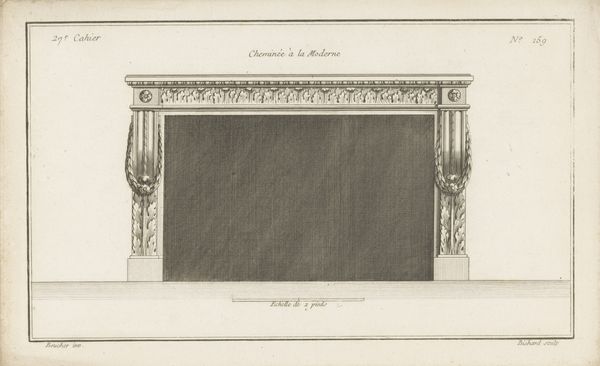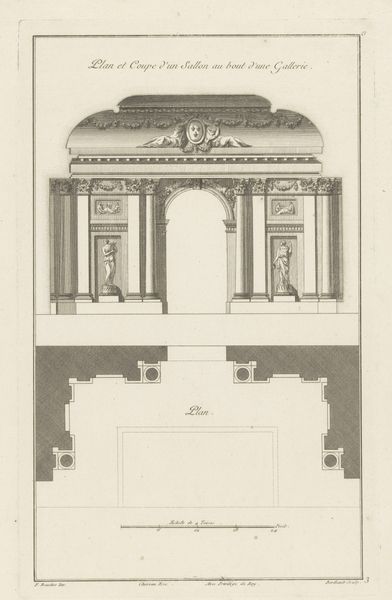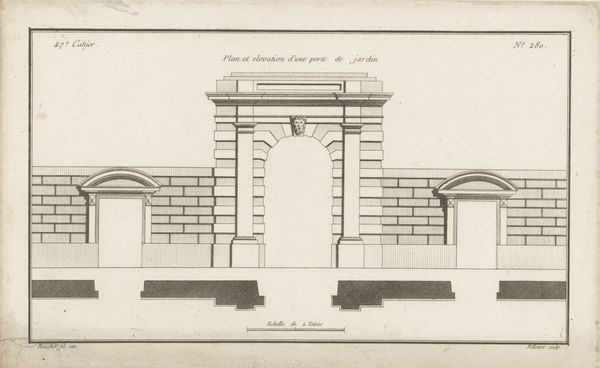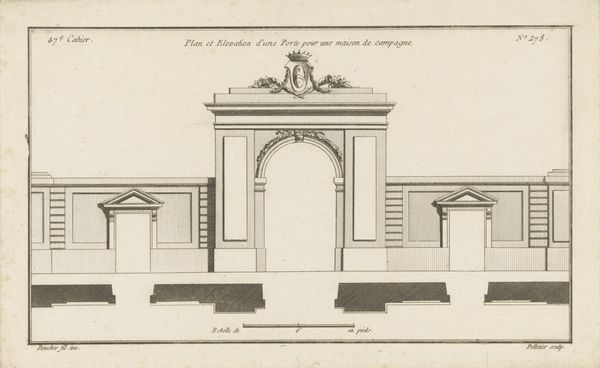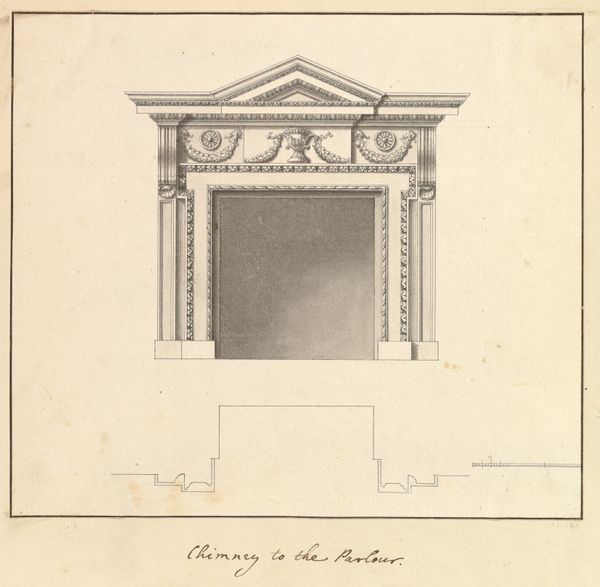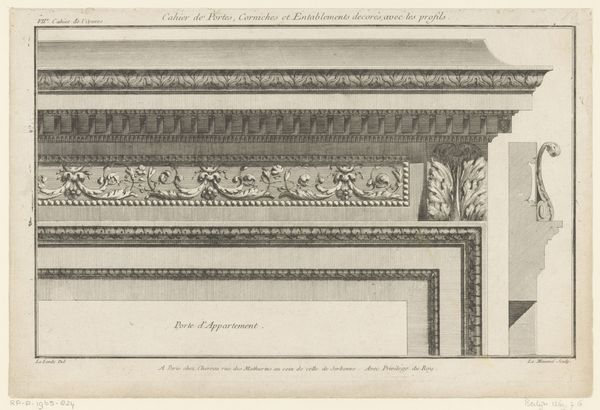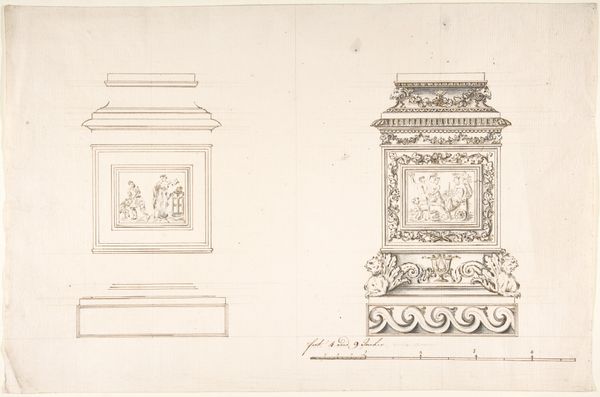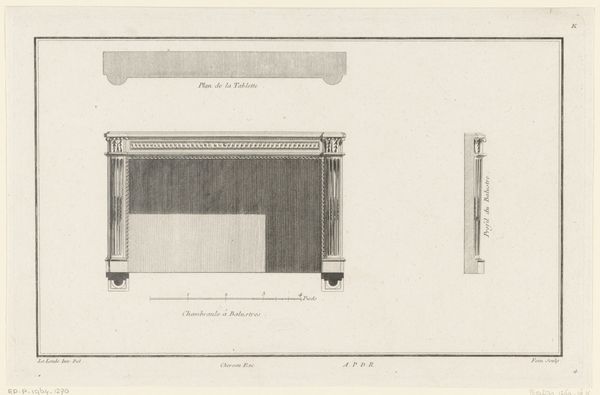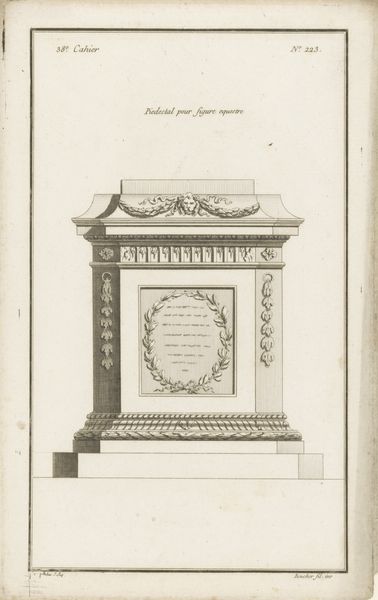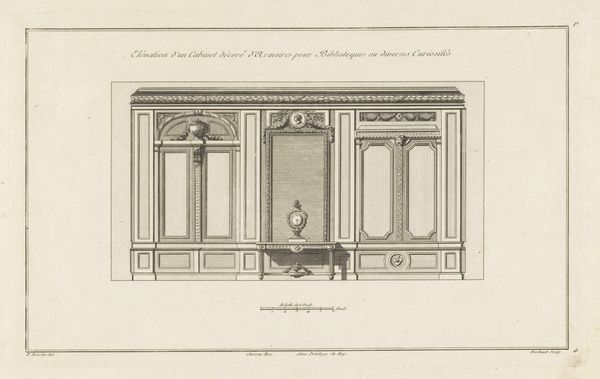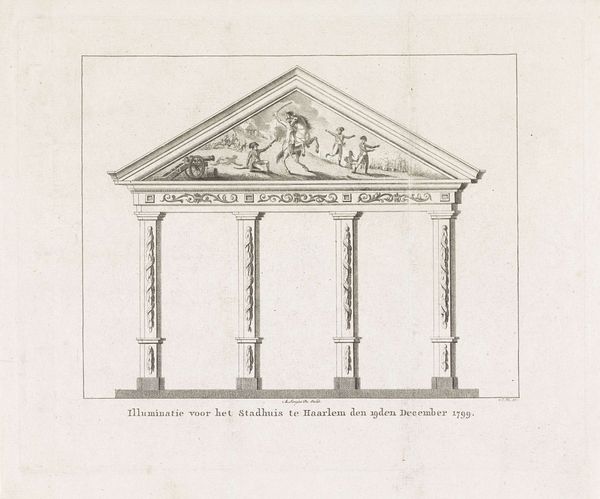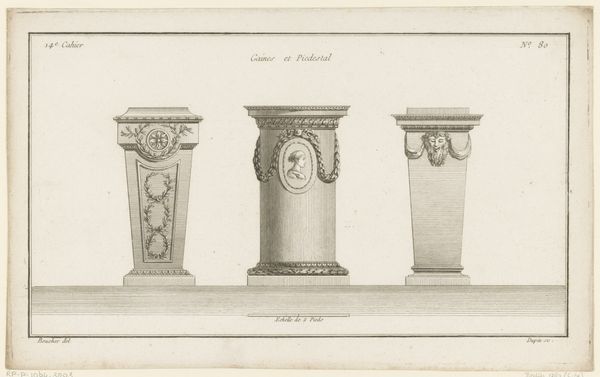
drawing, print, paper, engraving
#
drawing
#
neoclacissism
# print
#
paper
#
form
#
line
#
engraving
Dimensions: height 204 mm, width 330 mm
Copyright: Rijks Museum: Open Domain
Editor: This is "Voetstuk met helmen en schild," or "Pedestal with helmets and shield," a print made between 1772 and 1779 by Jean Pelletier, here on display at the Rijksmuseum. It seems like an architectural plan, very formal and austere. What do you see in this piece? Curator: This print, embodying Neoclassical aesthetics, presents an idealized vision of power, steeped in the visual language of ancient empires. What is communicated by showcasing the elements of war, like helmets and shields, on a pedestal? Editor: It suggests military strength as something to be admired and elevated, I guess? Curator: Precisely! Consider how this imagery reinforces hierarchies. Who would be positioned on such a pedestal in reality, and conversely, who might be excluded from this vision of glory? The artist assumes a cultural and historical context dominated by the elite. How might marginalized communities interpret this piece? Editor: I never thought about it that way, as excluding certain groups. I was only focused on the helmets. I guess you are suggesting that these symbols have a historical impact beyond their immediate meaning? Curator: Yes, and it's also worth investigating how this art relates to broader power structures. We might think about it in terms of contemporary dialogues around monument removal, asking ourselves, whom do we choose to honor and why? Editor: That is so helpful. I learned a lot about the relationship between power, social context, and art. Thanks! Curator: Absolutely! These objects provide unique perspectives on intersectional dialogues of identity and power.
Comments
No comments
Be the first to comment and join the conversation on the ultimate creative platform.
